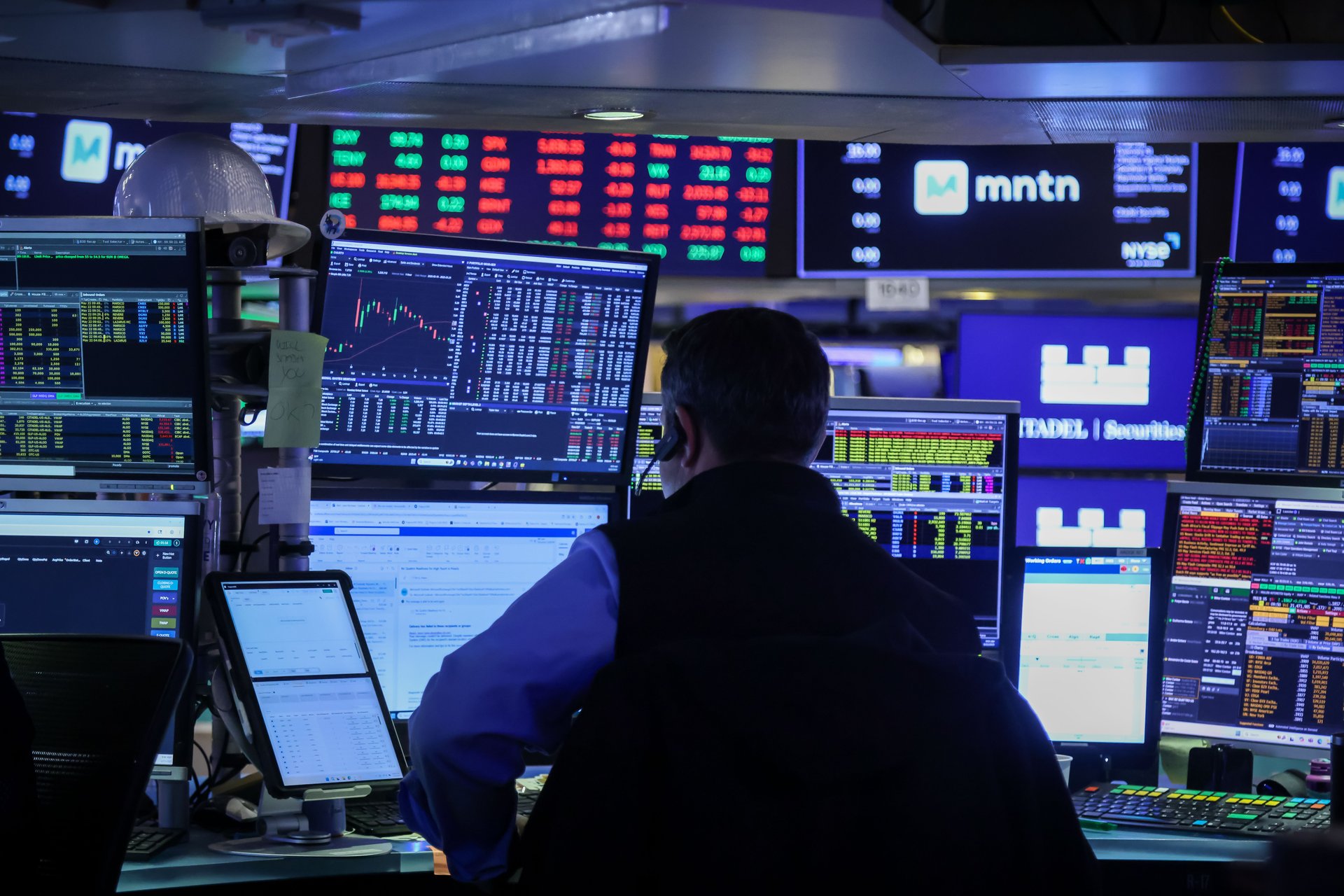
The Dow falls 800 points and oil prices surge as Israel attacks Iran
Markets tumble as Middle East conflict erupts and oil spikes. Wall Street's reaction may be swift, but the political calculus remains uncertain

Markets tumble as Middle East conflict erupts and oil spikes. Wall Street's reaction may be swift, but the political calculus remains uncertain
U.S. stocks fell sharply on Friday, with all three major market indexes deep in the red following Israel's attack on Iranian nuclear facilities, which began overnight and continued into Friday. Oil prices rocketed more than 8%.
The Dow Jones Industrial average dropped 787 points in afternoon trading, or 1.8%. The S&P 500 lost 1%, and the Nasdaq was off 1.1%.
On the back of those rising oil prices, airline stocks slipped, with Delta and United Airlines both off about 4%. Energy stocks rose alongside crude, and defense stocks climbed on expectations of extended military action. At the same time, the VIX — a key measure of market volatility — spiked more than 17%.
The market’s reaction may be swift and stiff, but the political calculus remains uncertain.
While the U.S. has a long history of behind-the-scenes alignment with Israeli military actions, and the strikes follow months of both strategic and inadvertent U.S. leaks to the news media, multiple outlets characterize the Israeli action as a “snub” to the Trump administration that left the White House out of the decision-making process. Secretary of State Marco Rubio insists the Israeli strike was “unilateral.”
A natural question now is: Why does Iran persist with its nuclear program, even in the face of seemingly devastating military consequences? The answer is complex, but experts have long believed Tehran views nuclear capability as the ultimate deterrent — a way to survive sanctions and the threat of regime change. Essentially, the strategy, however dangerous, may not be about avoiding strikes. It may be more about surviving them long enough to secure irreversible leverage. Where those possible plans stand amid Friday’s smoking wreckage is not clear.
Oracle stock rose 13% late Thursday to close just shy of $200 per share after blowout earnings that showed just how quickly and steeply demand is rising for AI-powered cloud services. The company posted a 52% year-over-year jump in cloud infrastructure revenue and forecast even faster growth in 2026, with total cloud sales projected to rise more than 40%. Oracle stock was up about 8% despite the broader selloff.
Adobe also posted earnings late Thursday, raising its full-year sales and profit forecasts. AI was the driver for it too, with total revenue rising 11% over last year to nearly $6 billion.
The coming week promises more high-stakes news. The Federal Reserve is set to release its latest policy decision and economic projections, while Accenture, CarMax, Kroger, and Darden Restaurants will all report.

CEO Lisa Su debuted the company's MI350 series chip touted a coming partnership with ChatGPT maker OpenAI
Nvidia may still dominate the artificial intelligence chip market, but Advanced Micro Devices Inc. (AMD) is barreling ahead, and CEO Lisa Su believes the $500 billion tipping point is now closer than ever.
At the “Advancing AI” event in San Jose, California, on Thursday, Su made a bold announcement: AMD’s MI350 series — led by the MI355X — has began shipping earlier this month and delivers “35 times faster” inference performance than its predecessor, she said, which would dramatically accelerate AMD’s competitiveness in the global market.
What stood out in particular, though, was Su’s recalibrated market outlook. Previously, she predicted that the global AI processor would reach $500 billion in market revenue by 2028. Now, she’s projecting that the threshold will be surpassed in under three years.
“People used to think that $500 billion was a very large number,” she said after her presentation. “Now, it seems well within grasp.”
That projection is backed by AMD’s expanding portfolio. At the event, Su showcased the company’s coming MI400 series — the product, she said, which will position AMD as clear leaders over Nvidia’s available tech when AMD’s series debuts next year. Su said AMD is adding memory and components to access information more quickly, offering an important advantage. She also gave a glimpse of the 2026 “Helios” rack-scale server, which packs up to 72 of these chips and is built on open networking standards — an intentional pivot away from Nvidia’s closed NVLink architecture.
“The future of AI is not going to be built by any one company or in a closed ecosystem. It's going to be shaped by open collaboration across the industry,” Su said.
AMD has seen strategic partnerships follow. OpenAI CEO Sam Altman joined Su on stage at the event, remarking that initial specs for the MI400 were so ambitious he thought, “No way.” He confirmed OpenAI is working with AMD on the company’s MI450 chips. And major names such as Meta, Oracle, and xAI are already testing or deploying MI300X successors and supporting AMD’s modular approach. AI cloud provider Crusoe told Reuters that it’s planning to buy $400 million of AMD’s new chips.
Still, AMD’s challenges remain steep.
Despite gains, the company still commands just a sliver of the market, while Nvidia continues to dominate with a 90–98% share. And AMD’s stock dipped 2.2% after the San Jose event — as investors are seemingly waiting for proof that momentum can translate into significant market share shifts. The company’s stock is down 3.26% year-to-date, while Nvidia’s is up 2.74%.
Nvidia’s software ecosystem remains the gold standard for developers, and its NVL72 rack-scale systems are deeply embedded across major data centers. The company’s integration of hardware and software makes it difficult for competitors to chip away at its lead — even with better pricing or open standards.
Additional headwinds linger for both companies, however. U.S. export restrictions — particularly on China-bound chips — could affect AMD’s revenue to the tune of around $1.5 billion this year. AMD is advocating for eased curbs, citing a Saudi deal as a step toward ensuring its technology remains globally accessible.
But as AI inference becomes the dominant workload, price‑performance and open architectures will become more and more significant. On Thursday, Su’s message was clear: AMD isn’t just ready to chip away at Nvidia, it wants to challenge it head-on — with silicon and systems that span the full stack.
If the global market for AI products and services truly surges past a trillion dollars in the next few years, as Bain & Company predicted earlier this year, AMD is positioning itself to claim a larger portion of the market.
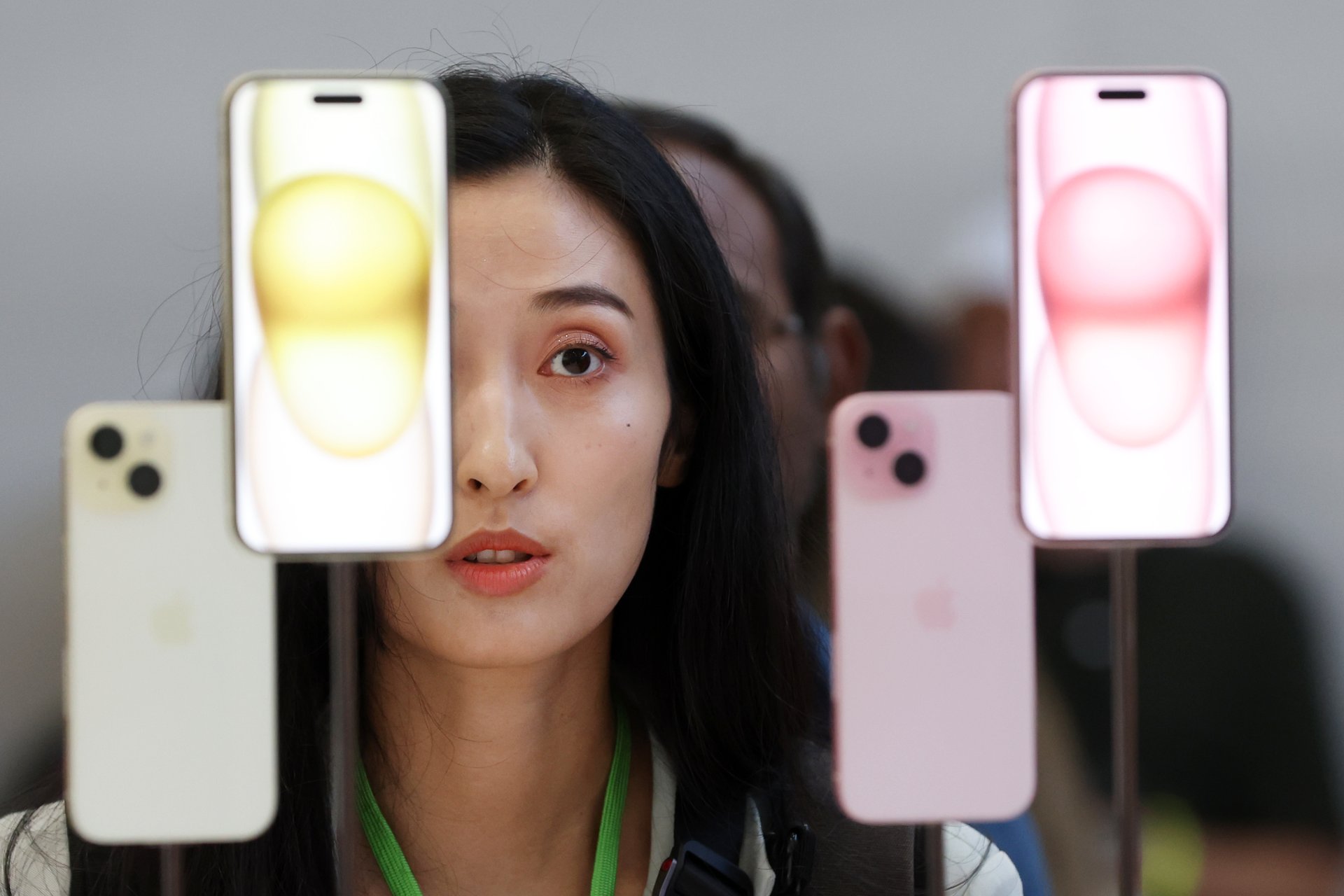
As President Donald Trump's tariffs continue to threaten Apple's global supply chain, its pivot into India (and out of China) is paying off
Apple’s supply chain is undergoing a high-stakes pivot — right under the White House’s nose. Reuters reports that between March and May 2025, Foxconn, one of the Apple’s biggest suppliers, shipped $3.2 billion worth of iPhones from India, with 97% bound for U.S. soil.
That’s not just diversification slack — it’s strategic re-engineering, timed for maximum tariff insulation. Apple said in late April that it wants to shift all production for U.S.-sold iPhones from China to India by the end of 2026 as the trade war between the U.S. and China was escalating.
Only a year ago, India-made iPhones followed global routes (across Europe and elsewhere). Now, nearly all units made in the country are landing in the U.S., a dramatic swing from the 50% U.S.-bound average in 2024. May’s shipments alone hit almost $1 billion, just shy of the record $1.3 billion in March —perhaps proof that Apple shift isn’t seasonal but systemic.
Why the urgency? President Donald Trump’s tariffs — now at 55% on Chinese imports after recent trade talks, after reaching as high as 145% — have had Apple scrambling for an outlet. India’s 10% base tariff is far more manageable, and the country is working to negotiate a deal to avoid the 26% “reciprocal” levy Trump announced and then paused during his “Liberation Day” event in early April.
Trump has threatened Apple with 25% tariffs if it doesn’t make its iPhones in the U.S. Following a report by The Financial Times that Foxconn would spend $1.5 billion on a plant in India for iPhones, Trump seethed on social media.
“I have long ago informed Tim Cook of Apple that I expect their iPhone’s that will be sold in the United States of America will be manufactured and built in the United States, not India, or anyplace else. If that is not the case, a Tariff of at least 25% must be paid by Apple to the U.S.,” Trump wrote in a TruthSocial post.
He separately said he told CEO Tim Cook: “We are not interested in you building in India. India can take care of themselves; they are doing very well, and we want you to build here.” The souring relationship between the two comes after Trump said he talked to Cook when the White House announced the original 90-day pause on most reciprocal tariffs between the U.S. and China — the president claimed Cook said he wants to build “lots of plants” in the U.S.
Still, moving iPhone production to the U.S. is near impossible at this point. Even those on his side of the aisle agree; National Review contributor Pradheep J. Shanker tweeted that “Trump simply doesn’t understand the numbers of how this works at all. There is no way Apple moves production to the U.S. any time soon.”
The bigger picture here regarding India is bold.
Just five months into 2025, Foxconn has dispatched $4.4 billion in iPhones from India, eclipsing all of 2024’s $3.7 billion. Analysts project “made‑in‑India” iPhones will account for 25–30% of global shipments this year — up from about 18% in 2024.
Still, India isn’t China. Manufacturing costs remain steep, thanks to high component duties and thorny infrastructure, and Apple still relies on China for roughly 80% of U.S. iPhone sales. Yet the company’s shift isn’t built on cost alone — it’s geopolitical hedging. As long as U.S.–China trade tensions remain incredibly complicated (and increasingly likely to change on a single tweet), India offers a tariff-native haven.
Foxconn’s India move aligns with Prime Minister Narendra Modi’s “Make in India” vision and Foxconn’s multibillion-dollar investment plans in Tamil Nadu, Karnataka, and Telangana. Still, high costs of importing mobile phone components could hinder plans.
Apple is no longer treating India as Plan B — it’s Plan A under pressure. And as long as Washington swings the tariff needle, expect Foxconn’s India output, bolstered by private jets and customs fast lanes, to keep rerouting iPhones out of China and into U.S. hands.
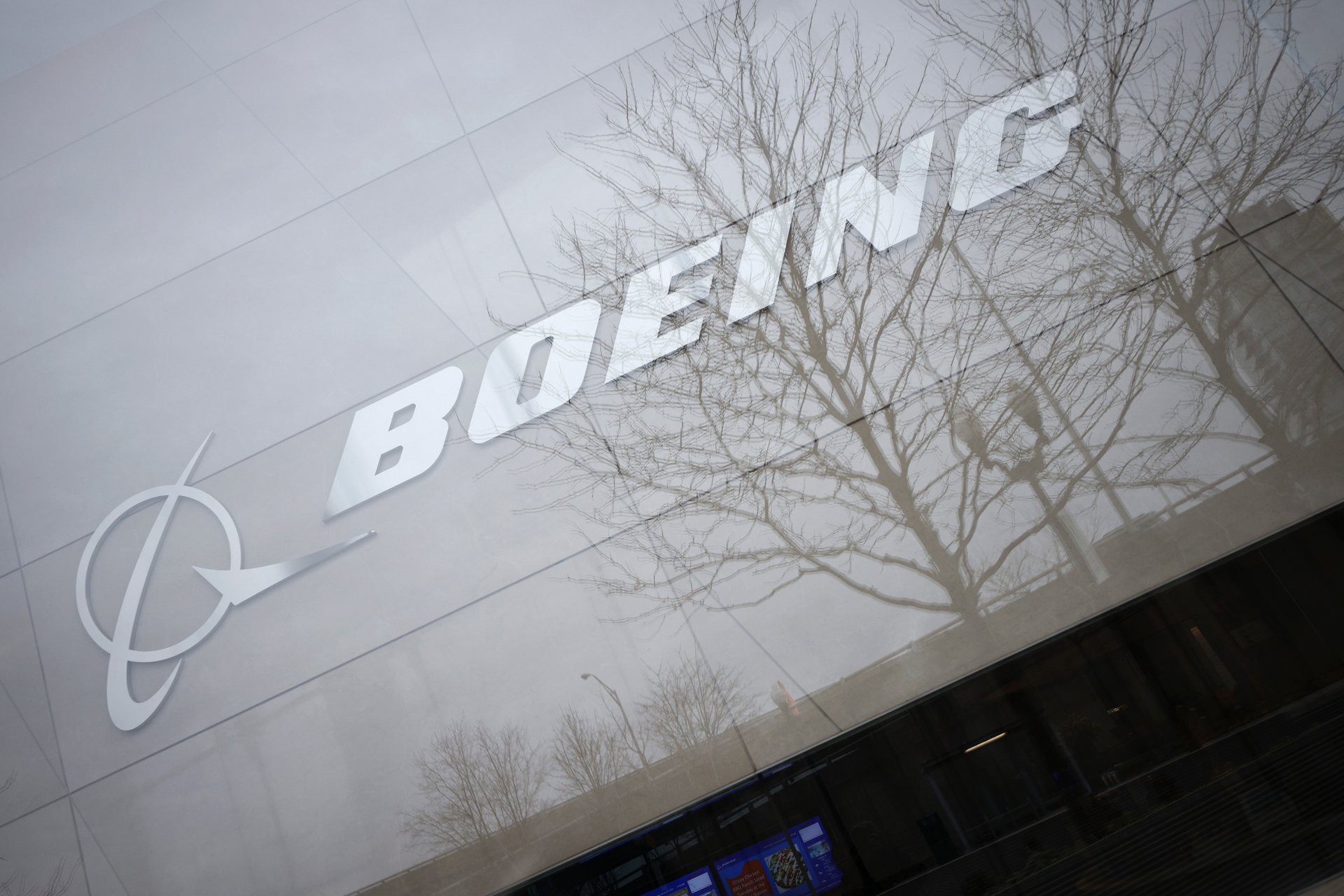
The fatal crash, which killed at least 200 people, is the first for Boeing’s 787 Dreamliner
Boeing stock was down some 6% Thursday morning after a fatal crash involving one of its 787-8 Dreamliner aircraft.
The plane, operated by Air India, tragically crashed just minutes after takeoff from Ahmedabad, killing many of the people onboard and causing additional casualties on the ground, according to Indian officials. It's not yet clear if there are survivors from the flight itself.
The plane was bound for London’s Gatwick Airport when it went down in a densely populated area, hitting residential buildings, a medical college, and offices near the airport. The cause of the crash has not yet been determined.
The event marks the first fatal crash involving a 787 Dreamliner since the aircraft entered service in 2011. In addition to the human toll, it delivers a devastating blow to what’s been thought of as one of Boeing’s most modern jets. While the Dreamliner faced some battery-related groundings early in its history, it has, until now, avoided the kind of tragedies that plagued Boeing’s 737 MAX program, which saw two deadly crashes in 2018 and 2019, and additional issues in 2024.
Spokespeople for Boeing have said the company is in contact with Air India and assisting investigators.
Just days ago, a raft of articles speculated about whether or not Boeing's turnaround might finally be turning. Now the crash revives old concerns and surfaces new ones just as recently-installed CEO Kelly Orthberg was attempting to restore public confidence.
Shares of key Boeing suppliers, including Spirit AeroSystems and GE Aerospace, also dropped approximately 2% each. Some analysts described the stock moves as knee-jerk reactions as fears about Boeing’s safety issues take hold once more.
As emergency responders remain on the scene in India, aviation specialists now turn to black box data for signs of whether this is an isolated incident or the start of another painful chapter.
Boeing’s response will be closely watched, too.
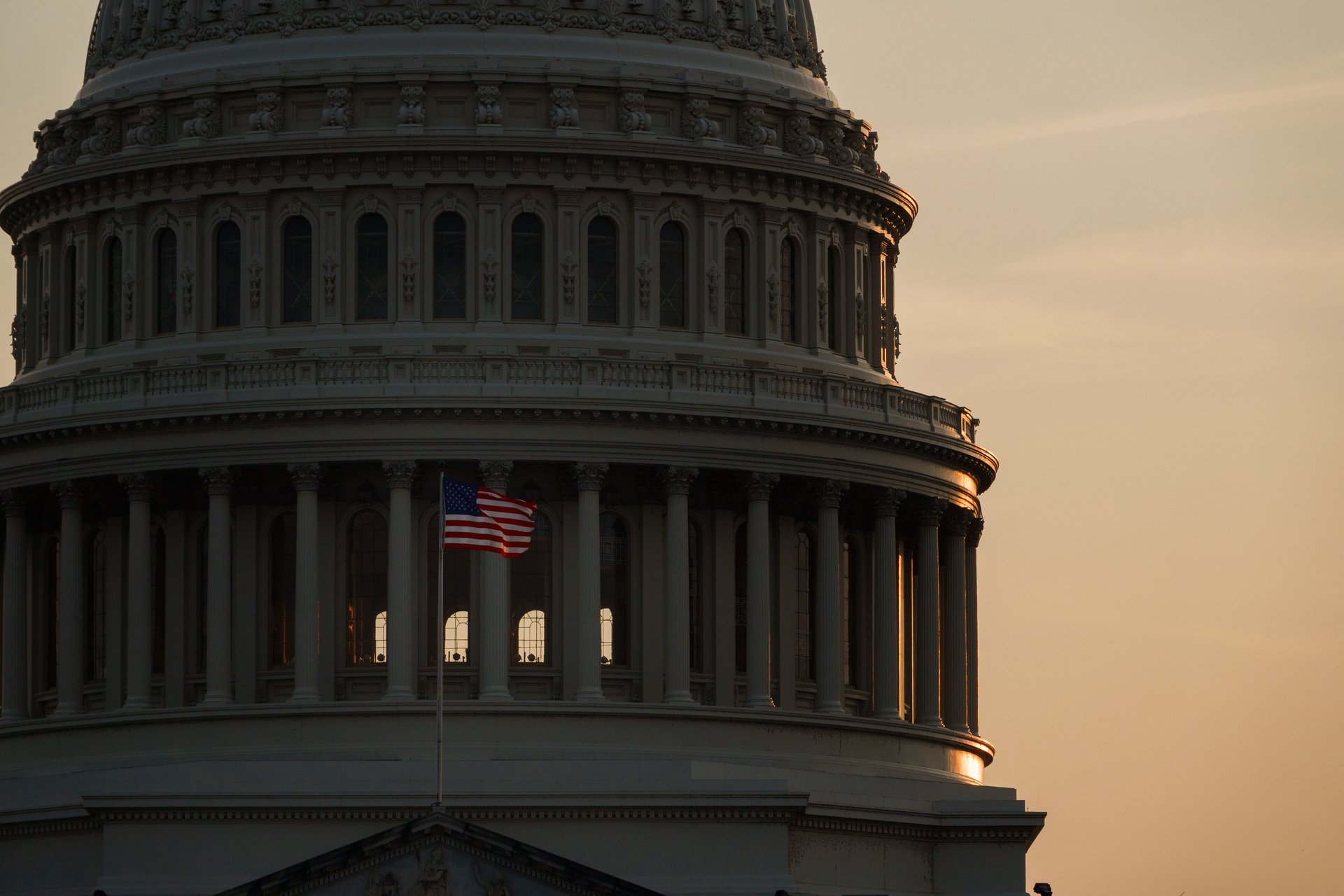
Rising U.S. debt and a shaky 20-year sale last month are turning routine Treasury auctions into high-stakes tests of investor confidence
The U.S. Treasury is wrapping up two days of debt auctions, with Wednesday seeing a $39 billion sale of 10-year bonds and Thursday capping off with a $22 billion sale of 30-year bonds. The government regularly holds such auctions to fund its operations, and typically only wonks and bond traders mind the numbers. But lately, more and more people are tuning in.
Behind the growing attention is a particular worry. What if buyers stop stepping forward? What if demand falls – and falls hard?
Treasury auctions happen online. Investors say how much they want to buy and the minimum yield they’ll accept. The government fills the lowest-rate bids first, working up until all the bonds are sold. Everyone whose bid is accepted gets the same final rate — the highest yield the government is willing to accept.
For now, bidders are still showing up in force. Wednesday’s $39 billion sale of 10-year notes was well received, with yields only slightly below expectations and signs of healthy demand. Though one auction did spark volatility across the broader market, April and May’s auctions, held in the wake of Trump’s tariff-heavy “Liberation Day” announcement, also saw investor appetite below panic-button levels.
Still, fear persists that one weak auction could send bond yields spiking and markets tumbling.
That’s especially true for Thursday's 30-year auction, where yields hover just below the psychologically significant 5% line. A bad sale could push them over the edge again. A strong one might calm nerves.
But it’s not just the usual market mechanics in play. The rising scrutiny of these once-sleepy, even boring events reflects widespread unease with the state of U.S. debt. With deficits ballooning, interest costs rising, and President Donald Trump proposing a second round of tax cuts, auctions like Thursday's are becoming tests for global faith in American fiscal discipline. That is, solvency.
“The durability of the ‘sell U.S. assets’ trade may be overstated,” BMO Capital Markets' Ian Lyngen said. Still, the fact that anyone outside of fixed-income desks is pondering that trade at all marks a significant shift.
For now, demand for U.S. debt is holding up. But the question of “how long can this last?” is no longer just for bond geeks. It’s becoming a national one.
One reason investors and commentators are watching closely because they’ve seen what can happen when demand falters — and seen it recently. In Japan, a series of poorly received auctions has shaken the country’s historically stable bond market. Yields on 30- and 40-year Japanese government bonds have soared to multi-decade highs, and insurers who hold them are facing tens of billions in paper losses.
Now the Japanese government is considering direct intervention. According to Reuters, Japan may begin buying back super-long bonds issued at lower interest rates in an attempt to absorb some of the over-abundant supply. The plan is still under consideration, with the hope being that such buybacks would calm a market growing increasingly anxious about Japan’s rising debt load.
Despite assurances from Tokyo, demand for ultra-long bonds continues to deteriorate. What’s more, because Japan’s debt-to-GDP ratio is about 260% (and the Bank of Japan is already sitting on more than half the market), the country has few good options.
The fear is that the U.S. could one day face similar pressure: too much supply, not enough demand, and a loss of faith from investors who’ve long treated U.S. government debt as one of the world’s safest assets.
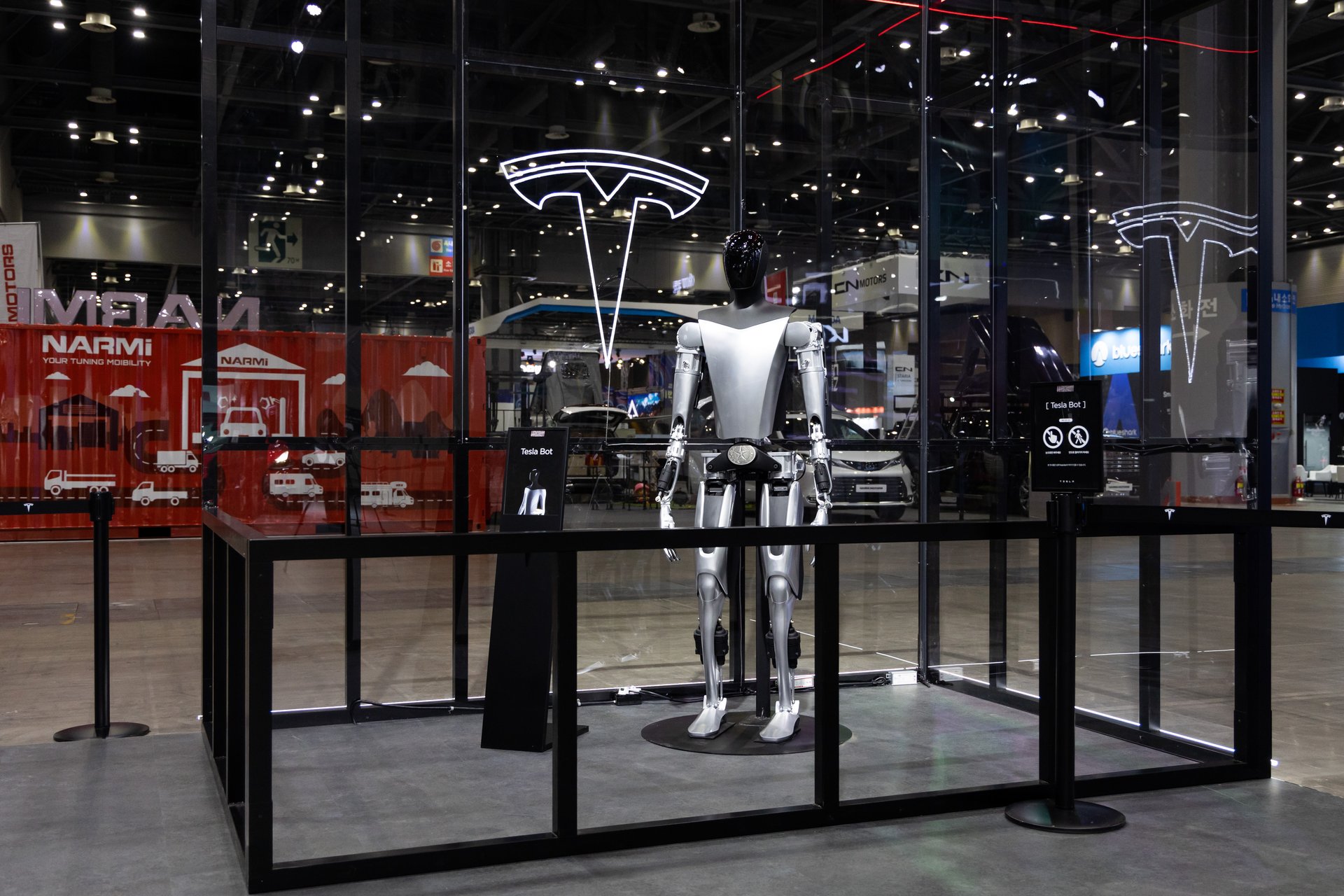
Tesla claimed in its lawsuit that the former employee launched a rival firm using stolen robotic hand designs
The future of robotics may be humanoid — but Tesla says this move was all too human. The EV giant is suing a former engineer for allegedly stealing trade secrets from its Optimus program and founding a rival AI robotics firm days later.
As Bloomberg reported, Tesla has filed suit against Zhongjie “Jay” Li, a former engineer on its Optimus humanoid robot program, accusing him of stealing proprietary designs and launching a rival startup in the heart of Silicon Valley. According to Tesla, Li didn’t just walk away with company secrets — he allegedly copied some of the robot’s most complex components and recreated them under a new name: Proception Inc.
The suit, filed Wednesday in federal court in San Francisco, paints a picture of quiet defection and stealth data siphoning.
Tesla claims Li downloaded sensitive files — specifically those related to robotic hand sensors — onto personal devices in the weeks leading up to his September 2024 departure. Just six days later, Proception was incorporated. Within five months, Proception was demoing a five-fingered “ProHand” that Tesla calls a dead ringer for its design — or, “hands that bear a striking resemblance to the designs Li worked on at Tesla,” according to the complaint.
Now, Tesla wants damages and an injunction blocking Li from using what it has called the most sophisticated hand ever made. Tesla’s Optimus program, still in early development, is aimed at creating general-purpose robots capable of factory labor, household tasks, and even child care. CEO Elon Musk said in May that the robot will be “the biggest product of all time.”
The humanoid robot industry, long stuck in the uncanny valley, is heating up as AI and sensor tech finally catch up to sci-fi ambition.
Several companies, including Figure AI (which just landed investment from Amazon and OpenAI), 1X Technologies, and Apptronik, are racing to deliver general-purpose bots. But making a truly dexterous robotic hand — one capable of gripping, pinching, and manipulating small objects — is one of the field’s holy grails.
That’s the very capability Li allegedly reproduced at Proception.
He was “entrusted with some of the most sensitive technical data in the program,” Tesla’s lawyers said in the filing, and Li's “conduct is not only unlawful trade misappropriation — it also constitutes a calculated effort to exploit Tesla’s investments, insights, and intellectual property for their own commercial gain.”
If Tesla’s allegations hold, the event would reprise a familiar plotline. The company has sued at least three former employees since 2020 for hauling data off to Zoox, XPeng, and most recently, Rivian; all those cases were settled before trial.
On the company’s earnings call in April, Musk said that he expects the scale-up of the Optimus robots to be faster than any of the company’s other products — a million units per year in less than five years. Musk claimed that there would be thousands of the robots working in Tesla factories by the end of the year and promised that the Optimus robots would help produce a time of “sustainable abundance for all.”
The timing is awkward for Musk, who has been pounding the table about Optimus for months, predicting “thousands of Optimus robots working in Tesla factories by the end of this year” and, eventually, “millions per year.” Last week, Optimus’ head of engineering, Milan Kovac, abruptly quit “to spend more time with family abroad,” forcing Autopilot chief Ashok Elluswamy to take the reins.
Losing a top lieutenant while fending off alleged intellectual-property leaks underscores how critical — and fragile — Tesla’s robotics push has become.

Thousands of CrushAI-related ads reportedly evaded Meta's moderation efforts in early January
Meta is suing a company that reportedly ran thousands of ads on its network to promote a so-called "nudify" app. The lawsuit was filed against Joy Timeline HK Ltd., the Hong Kong-based entity behind the app CrushAI, which enables users to generate fake and non-consensual sexually explicit images of other people.
The legal action follows multiple attempts by Joy Timeline to bypass Meta’s ad-review process, after the developer's ads were repeatedly removed for breaking the rules, Facebook's owner said in a statement Thursday.
The lawsuit also follows a letter sent by Sen. Dick Durbin, D-Ill., in February to Mark Zuckerberg, urging the CEO to address his company’s role in letting Joy Timeline run ads that violate Meta’s policies.
Durbin cited a report by tech news outlet 404 Media and research by Cornell Tech’s Alexios Mantzarlis that found that at least 8,010 CrushAI-related ads ran on Meta’s apps during the first two weeks of January.
Meta updated its policies regarding non-consensual intimate imagery over a year ago, to make it “even clearer” that promoting nudify apps is prohibited.
“We remove ads, Facebook Pages and Instagram accounts promoting these services when we become aware of them, block links to websites hosting them so they can’t be accessed from Meta platforms,” the company said in Thursday’s statement. It also restricts search terms like "nudify," "undress," and "delete clothing" on Facebook and Instagram.
The problem is larger than Meta and CrushAI, however.
A Bellingcat investigation published last year uncovered how sites like CrushAI promote themselves on mainstream platforms.
The investigation described a loosely affiliated network of similar platforms, which include Clothoff, Nudify, Undress, and DrawNudes. The apps have “manipulated financial and online service providers” by disguising their activities to evade crackdowns, Bellingcat reported.
For instance, it found that accounts on G2A, one of the world’s largest online video game marketplaces, were being used to collect payments for Clothoff. The site disguised the sales as if they were for downloadable gaming content.
The network has also tried to exploit payment services and marketplaces such as Coinbase, Patreon, PayPal, Shopify, Steam, and Stripe, in order to receive payments.
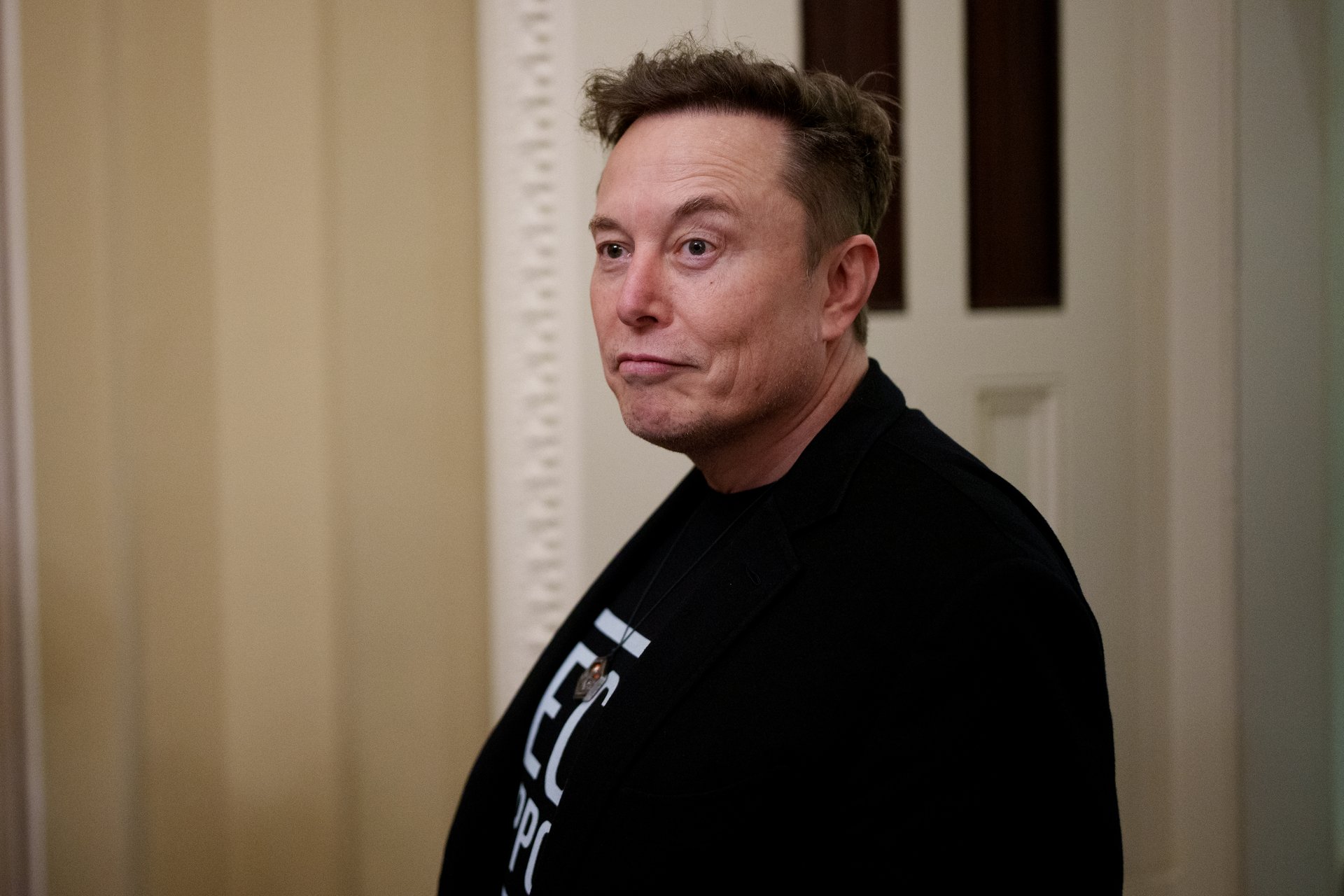
Elon Musk and his X CEO threatened advertisers with lawsuits amid a 44% decline in ad revenue
X, the social media platform formerly known as Twitter, is leaning into a coercive new advertising strategy under Elon Musk and CEO Linda Yaccarino: pressure, threats, and lawsuits.
That’s the picture painted in a bombshell Wall Street Journal report published Wednesday. The report describes how Musk and Yaccarino led an aggressive campaign to rescue X’s declining ad business by threatening to sue companies that refused to spend money on the platform.
Verizon, which hadn’t advertised on X since 2022, pledged at least $10 million this year after receiving a legal threat. Ralph Lauren also agreed to return after being threatened with a lawsuit. In all, at least six companies rejoined the platform after similar pressure tactics, according to the report. Some deals included binding ad-spend commitments, while others included soft or non-binding targets struck under duress.
Behind the scenes, X lawyers reportedly warned advertisers they could be added to an ongoing lawsuit alleging an illegal ad boycott. X first filed that suit last August, targeting the World Federation of Advertisers and several major brands. Unilever, Amazon’s Twitch unit, and Lego were all among them. Some companies, including Unilever, were later dropped from the suit after signing new ad deals.
The campaign marks an extraordinary and punitive effort to revive the platform’s revenue. After Musk’s $44 billion takeover in late 2022, user engagement is reported to have sharply declined. Advertisers fled in droves amid chaos inside the company and loosened content moderation standards. Yaccarino, a former NBCUniversal ad executive, has been attempting to lure those advertisers back with brand-safety tools and new content deals, including NFL and NBA highlights. But the threats suggest serious desperation.
At one point, a lawyer for X demanded that Pinterest commit to its pre-Musk ad spend for two years — or be sued. Pinterest declined, having found that its ads were more effective when run in other venues. X then followed through on its legal threat, naming Pinterest in the complaint.
“Advertisers are understandably concerned about the litigious streak of Musk’s X interpreted by some as ‘invest with us, or else,’” Ruben Schreurs, CEO of ad consultancy Ebiquity, told the Journal.
Musk has made his contempt for advertiser pressure clear in public, too. In a November 2023 interview at the DealBook Summit, when asked about brands leaving the platform, he said, “If somebody’s going to try to blackmail me with advertising, blackmail me with money… go f—k yourself.”
Addressing Disney CEO Bob Iger directly, who was reportedly in the audience, Musk added: “Hey, Bob, go f—k yourself.”
X’s ad sales fell from $4.6 billion in 2022 to $2.6 billion last year, a 44% decrease, even as the larger ad industry grew by double digits over the same period. For their part, Meta, Google, YouTube, and Amazon all saw vast gains in ad spend over that period. Pinterest and TikTok also saw ad spending grow significantly.
Even Snap, with its choppy track record, saw ad revenue climb between 2022 and 2025.
Though it’s recently ticked up, X’s ad revenue remains well below pre-Musk levels, per the Journal. Emarketer projects 2025 will bring the first annual ad growth since the takeover, though it’s also expected to remain below pre-Musk-takeover levels.
Meanwhile the backlash may just be getting started. Some ad agencies are now demanding legal immunity from future lawsuits before agreeing to spend on X.
X has refused.
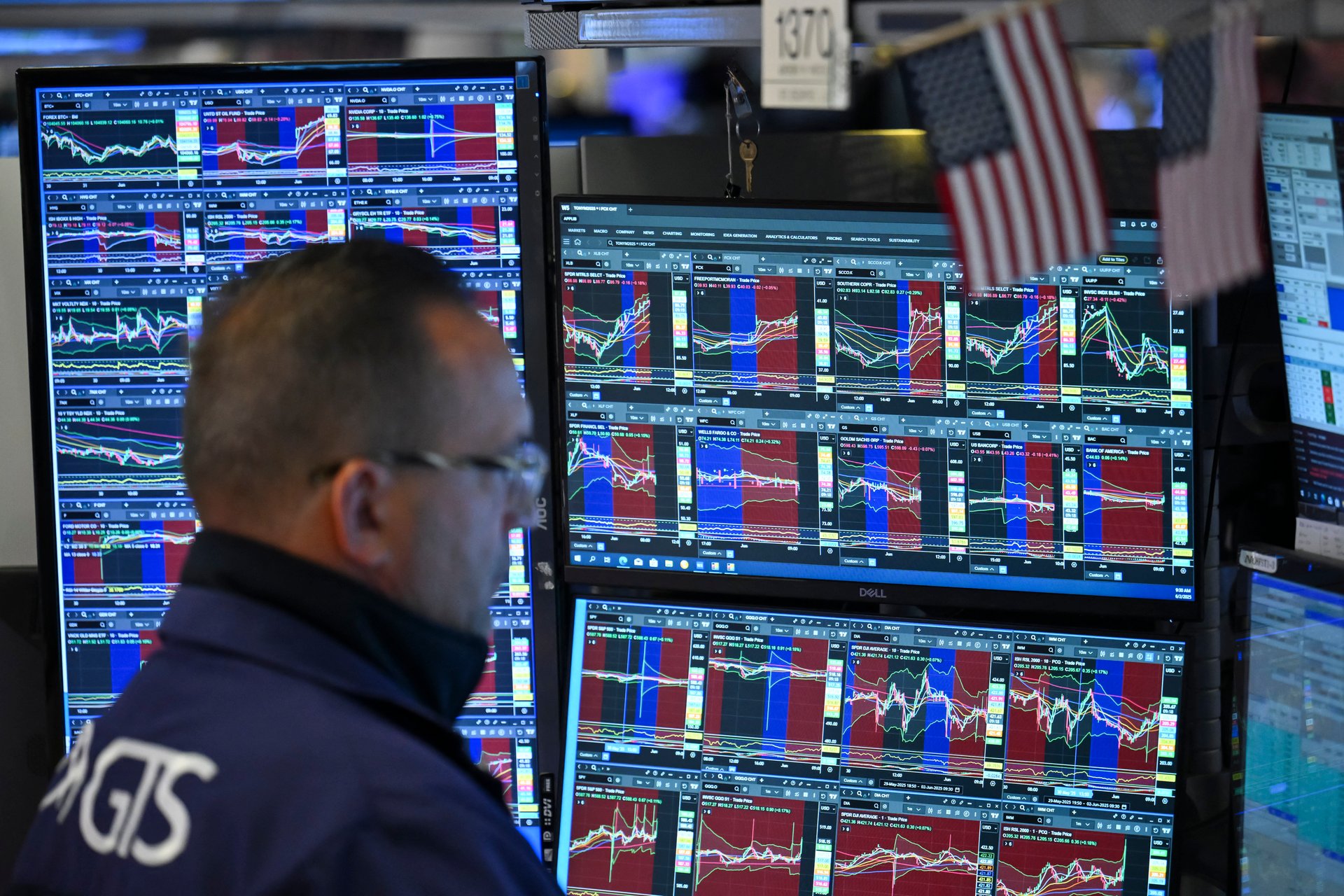
Investors are ditching U.S. equities in favor of overseas assets as economic concerns grow
Investors are ditching U.S. equities in favor of overseas assets as concerns grow over fiscal policy, rising debt, and a possible recession.
Exchanged-traded funds (ETFs) and equity mutual funds based in the U.S. saw outflows of $24.7 billion in May, according to LSEG data cited by Reuters. That’s the largest monthly exodus in a year. Meanwhile, last month European funds recorded inflows of $21 billion, taking year-to-date inflows to $82.5 billion, the highest in four years.
Data for 292 emerging market equity ETFs revealed inflows of $3.6 billion last month, bringing this year’s total to $11.1 billion, according to Reuters.
The S&P 500 is up just 3% this year. By comparison, it had risen 14% by this time last year.
President Donald Trump’s reciprocal tariffs on imported goods, and his fiscal policy, have a lot to do with the flight, as it has eroded U.S. assets’ safe-haven reputation.
Since the unveiling of the levies on April 2, the U.S. dollar has shed about 5% of its value against a basket of foreign currencies. Concurrently, in the week or so following "Liberation Day," a U.S. government bond sell-off ensued, sending 10-year Treasury yields soaring more than 12%. Yields remain high, hovering around 4.45%, up from 4.16% the day before the tariff unveiling.
Adding to the bond market’s tariff-related jitters, last week Trump unveiled his “Big Beautiful Bill," which could add $2.4 trillion to the deficit over the next decade, according to the nonpartisan Congressional Budget Office.
Typically, the dollar and yields have moved in step with each other, as higher yields signal to investors that economic growth is to come, thus attracting inflows of foreign capital and strengthening the currency.
That relationship appears to be breaking down, as the correlation reached its lowest level in nearly three years in June, according to the Financial Times' analysis of LSEG data. It's thought that higher borrowing costs could reflect higher risk, as the government takes on more debt while tariffs threaten growth.
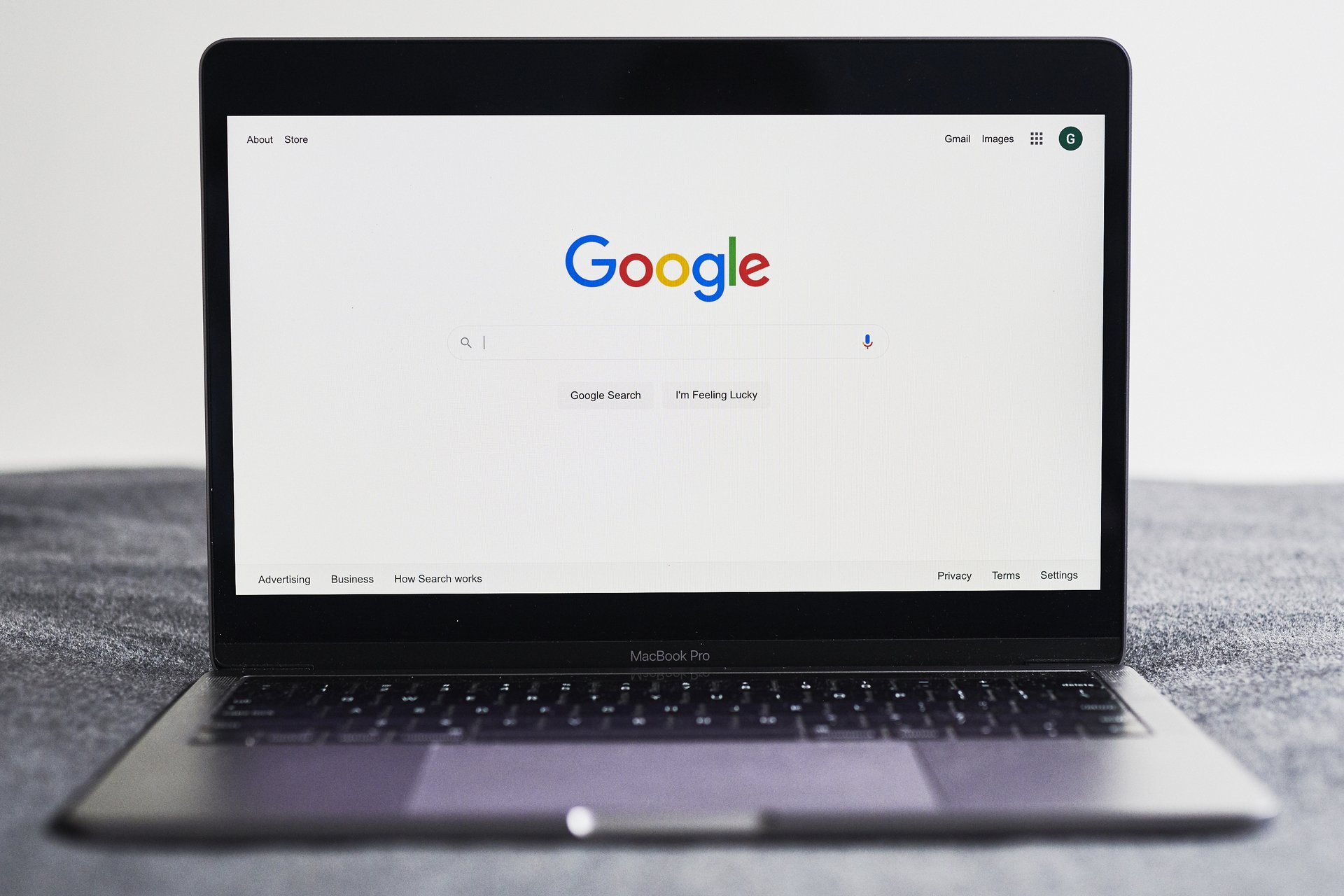
Even if Google wins its antitrust case, it could still lose the future of search — thanks to a shift toward AI
When Vineet Jain, the CEO of cloud management company Egnyte, decided to spend four days without using Google Search, he was “blown away” by how clean and simple AI interfaces were: no clutter at the top of his screen, no ads, just the answers. Shortly after, his 15-year-old son told him, “We don’t use Google anymore. We do everything with ChatGPT.”
That shift in user behavior comes as the U.S. Department of Justice gears up for a defining ruling in its long-running antitrust case against Google. In a decision expected by August, Judge Amit Mehta will decide whether Google must unwind its lucrative default-search deals and spin off its Chrome browser.
“If you remember the Samson and Delilah story where Samson’s power was in his hair, [Google’s] ‘hair’ is going to be search,” Jain said. And that search business may very well be on the chopping block — even if the DOJ doesn’t win its case.
In the first quarter of 2025, Google’s advertising revenue reached $66.9 billion, with $50.7 billion coming from Google Search — thanks largely to its iron-clad position as the default on browsers and devices. That default status is the quiet engine behind its dominance: In 2022, Google paid Apple over $20 billion to be the preset search engine on Safari, locking in the company’s share of mobile eyeballs. Chrome, Google’s browser, adds even more gravitational pull.
For years, regulators have circled Google over its dominance in search — and the advertising empire built on it. But what if the real existential risk isn’t legal at all? What if it’s behavioral?
Search is no longer analogous to Google. ChatGPT and other AI-native tools are starting to pull traffic and attention away from traditional search engines by answering questions directly, skipping the blue links, and ignoring the ad slots altogether. According to a recent report from Mary Meeker, ChatGPT hit a billion searches a day in less than two years; Google needed 11 years to reach that mark.
Jain said Mehta’s ruling could be a “watershed moment” for Google “in terms of how they regulate their platform power. Because they have become a behemoth — in search, display, advertising, everything related to it.”
As AI search starts to capture a larger share of the search market, Jain said the argument Google could make is, “‘Hey, we are not a monopoly anymore. We’re not as dominant as you’re making us out to be.’”
But whether the company wins or loses the antitrust case, the deeper problem remains: Google is built around an advertising model that depends on search volume, attention, and high-intent queries. Unlike pure AI chatbots, which can deliver answers free of sponsorship, Google can’t simply declutter its interface without cutting off the revenue stream that fuels its empire.
And while Google has begun integrating AI into its products — from AI overviews to Gemini — it’s trying to have it both ways: serve direct answers while keeping users scrolling and clicking long enough to monetize their attention. That’s a far harder trick than it sounds, especially as users come to expect stripped-down, ad-free experiences from tools such as ChatGPT, Perplexity, or Claude.
And the scale of the business makes any change feel like trying to turn an ocean liner. “Google Search, in terms of its contribution to the overall Google pie, is so disproportionately large it’s almost like a massive, massive, ten-times-the-size-of-the-Titanic that you’re trying to move,” Jain said. “So it’ll take time.”
How Google adjusts to the changing market is the “$10-plus-billion question,” he said.
Google’s dominance in search was never just about having the best engine. It’s also about placement — and payments. That strategy is what’s on trial. Mehta is weighing whether these default arrangements violate antitrust law by unfairly shutting out competition. A ruling that forces Google to unwind its “default” approach could dramatically shake up how users access search — and open the door for competitors to gain ground.
“Over time, given the size and heft [Google has], there will be a gradual atrophy in the search traffic going to them,” Jain said.
He said he expects some regulatory response regardless of the outcome. “There’ll be some action. I can predict. There’ll be some action,” he said. “I don’t know what it’s gonna be, and I hope the Chrome divestiture, if it happens, it’s done in a favorable way” — where it’s not bought by a competitor, such as OpenAI, which has expressed interest.
Any erosion to Google’s core business may not grab headlines like a courtroom ruling, but it could be as consequential. Just as Microsoft missed the mobile revolution while defending its Windows monopoly, Google risks clinging to its current business model while the next paradigm quietly passes it by. This isn’t the first time Google has faced a potential disruption — mobile search, voice assistants, and vertical platforms like Amazon and TikTok have all chipped away at its dominance.
But generative AI is different. It doesn’t just offer an alternative to search — it threatens the idea of search itself.
The irony is that Google has long known this moment was coming. In 2011, then-CEO Eric Schmidt warned that “the next Google” wouldn’t look like a search engine — “we’re trying to move from answers that are link-based to answers that are algorithmically based, where we can actually compute the right answer,” he said. That future is here, but Google’s own business incentives are pulling it in the opposite direction. The company can’t become a pure-answer engine without undercutting the ad clicks that make up the bulk of its revenue.
And that tension will only grow more painful as AI-native tools accelerate. Jain predicts search will remain Google’s biggest revenue contributor “for at least the next five to seven years,” but beyond that, the fundamentals begin to wobble.
Still, he’s not betting against the company. “People underestimate Google and the intellectual horsepower they bring to the table. And they are no slouches,” Jain said. “I would not bet against Google at this point.”
But even the smartest players can miss the moment if they’re too busy protecting the past. So while Google isn’t going anywhere — traditional search might be.